Kinetic Analysis of High-Temperature Plastic Flow in 2.25Cr-1Mo-0.25V Steel
Abstract
1. Introduction
2. Materials and Methods
3. Results and Discussion
4. Conclusions
Author Contributions
Funding
Conflicts of Interest
References
- Jiang, Z.; Pei, W.; Li, D.; Li, Y. The evolutions of microstructure and mechanical properties of 2.25Cr-1Mo-0.25 V steel with different initial microstructures during tempering. Mater. Sci. Eng. A 2017, 699, 165–175. [Google Scholar] [CrossRef]
- Kostka, A.; Tak, K.G.; Hellmig, R.J.; Estrin, Y.; Eggeler, G. On the contribution of carbides and micrograin boundaries to the creep strength of tempered martensite ferritic steels. Acta Mater. 2007, 55, 539–550. [Google Scholar] [CrossRef]
- Zhao, L.N.; Yao, H.P.; Song, X.L.; Jia, J.; Xiang, Z.D. On the Physical Models for Predicting the Long-Term Creep Strengths and Lifetimes of Modified 9Cr-1Mo Steel. J. Alloys Compd. 2017, 726, 1246–1254. [Google Scholar] [CrossRef]
- Zhang, Y.T.; Luo, P.; Yan, H.T.; Zhang, H.Q.; Li, J.F. The Effect of Bainite Type on the Evolution of Carbide Constituent during an Accelerated Aging in Cr-Mo-V Steel. J. Mater. Eng. Perform. 2018, 28, 578–585. [Google Scholar] [CrossRef]
- Liu, Z.L.; Liu, C.M.; Miao, L.D.; Guo, X.F.; Ding, J.H.; Zhang, H.Q. The Evolution of Complex Carbide Precipitates in a Low Alloy Cr-Mo-V Steel after Long-Term Aging Treatment. Materials 2019, 12, 1724. [Google Scholar] [CrossRef] [PubMed]
- Zhang, Y.T.; Miao, L.D.; Wang, X.J.; Zhang, H.Q.; Li, J.F. Evolution Behavior of Carbides in 2.25Cr-1Mo-0.25V Steel. Mater. Trans. 2009, 50, 2507–2511. [Google Scholar]
- Tsuchida, Y.; Inoue, T.; Suzuki, T. Creep Rupture Strength of V-Modified 2.25Cr-1Mo Steel. Int. J. Press. Vessels Piping 2004, 81, 191–197. [Google Scholar] [CrossRef]
- Arzt, E.; Wilkinson, D.S. Threshold Stresses for Dislocation Climb over Hard Particles: The Effect of an Attractive Interaction. Acta Metall. 1986, 34, 1893–1898. [Google Scholar] [CrossRef]
- Spigarelli, S.; Cerri, E.; Bianchi, P.; Evangelista, E. Interpretation of creep behavior of a 9Cr-Mo-Nb-V-N (T91) steel using threshold stress concept. Mater. Sci. Technol. 1999, 15, 1433–1440. [Google Scholar] [CrossRef]
- Shrestha, T.; Basirat, M.; Charit, I.; Potirniche, G.P.; Rink, K.K.; Sahaym, U. Creep deformation mechanisms in modified 9Cr-1Mo steel. J. Nucl. Mater. 2012, 423, 110–119. [Google Scholar] [CrossRef]
- Wang, C.Z.; Liu, J.T. Materials Properties, 1st ed.; Press of Beijing University of Technology: Beijing, China, 2001; pp. 15–22. [Google Scholar]
- Zhang, C.; Zhang, L.W.; Shen, W.F.; Liu, C.R.; Xia, Y.N.; Li, R.Q. Study on constitutive modeling and processing maps for hot deformation of medium carbon Cr-Ni-Mo alloyed steel. Mater. Des. 2016, 90, 804–814. [Google Scholar] [CrossRef]
- Dudko, V.A.; Kaibyshev, R.O.; Belyakov, A.N.; Sakai, Y.; Tsuzaki, K. Plastic flow of the mechanically alloyed Fe-0.6%O at temperatures of 550–700 °C. Phys. Met. Metall. 2009, 107, 516–521. [Google Scholar] [CrossRef]
- Kaibyshev, R.; Kazakulov, I. Deformation behaviour of Fe-3Si steel. Mater. Sci. Technol. 2004, 20, 221–228. [Google Scholar] [CrossRef]
- Wang, X.J.; Hu, X.S.; Wu, K.; Deng, K.K.; Gan, W.M.; Wang, C.Y.; Zheng, M.Y. Hot deformation behavior of SiCp/AZ91 magnesium matrix composite fabricated by stir casting. Mater. Sci. Eng. A 2008, 492, 481–485. [Google Scholar] [CrossRef]
- Langdon, T.G. Grain Boundary Sliding As a Deformation Mechanism during Creep. Philos. Mag. 1970, 22, 689–700. [Google Scholar] [CrossRef]
- Ma, Z.Y.; Tjong, S.C. Creep Deformation Characteristics of Discontinuously Reinforced Aluminium-Matrix Composites. Compos. Sci. Technol. 2001, 61, 771–786. [Google Scholar] [CrossRef]
- Kassner, M.E. Recent Developments in Understanding the Mechanism of Five-power-law Creep. Mater. Sci. Eng. A 2005, 410–411, 20–23. [Google Scholar] [CrossRef]
- Ashby, M.F. A First Report on Deformation Mechanism Maps. Acta Metall. 1972, 20, 887–897. [Google Scholar] [CrossRef]
- Spingarn, J.R.; Nix, W.D. A Model for Creep Based on the Climb of Dislocations at Grain Boundaries. Acta Metall. 1979, 27, 171–177. [Google Scholar] [CrossRef]
- Mishra, R.S.; Jones, H.; Greenwood, G.W. On the Threshold Stress for Diffusional Creep in Pure Metals. Philos. Mag. A 1989, 60, 581–590. [Google Scholar] [CrossRef]
- Welsch, E.; Ponge, D.; Hafez Haghighat, S.M.; Sandlöbes, S.; Choi, P.; Herbig, M.; Zaefferer, S.; Raabe, D. Strain hardening by dynamic slip band refinement in a high-Mn lightweight steel. Acta Mater. 2016, 116, 188–199. [Google Scholar] [CrossRef]
- Calcagnotto, M.; Adachi, Y.; Ponge, D.; Raabe, D. Deformation and fracture mechanisms in fine- and ultrafine-grained ferrite/martensite dual-phase steels and the effect of aging. Acta Mater. 2011, 59, 658–670. [Google Scholar] [CrossRef]
- Humphreys, F.J.; Kalu, P.N. Dislocation-particle interactions during high temperature deformation of two-phase aluminium alloys. Acta Metall. 1987, 35, 2815–2829. [Google Scholar] [CrossRef]
- Fan, Q.S. Stress Analysis and Strength Design of Pressure Vessel; Atomic Energy Press: Beijing, China, 1977. [Google Scholar]
- Morrow, B.M.; Kozar, R.W.; Anderson, K.R.; Mills, M.J. An Examination of the Use of the Modified Jogged-Screw Model for Predicting Creep Behavior in Zircaloy-4. Acta Mater. 2013, 61, 4452–4460. [Google Scholar] [CrossRef]
- Kaibyshev, R.; Kazyhanov, V.; Musin, F. Hot Plastic Deformation of Aluminium Alloy 2009-15%SiCw Composite. Mater. Sci. Technol. 2002, 18, 777–786. [Google Scholar] [CrossRef]
- Luo, P.; McDonald, D.T.; Xu, W.; Palanisamy, S.; Dargusch, M.S.; Xia, K. A Modified Hall-Petch Relationship in Ultrafine-Grained Titanium Recycled from Chips by Equal Channel Angular Pressing. Scripta Mater. 2012, 66, 785–788. [Google Scholar] [CrossRef]
- Boehlert, C.J.; Cowen, C.J.; Tamirisakandala, S.; McEldowney, D.J.; Miracled, D.B. In situ scanning electron microscopy observations of tensile deformation in a boron-modified Ti–6Al–4V alloy. Scrip. Mater. 2006, 55, 465–468. [Google Scholar] [CrossRef]
- Boehler, C.J.; Chen, Z.; Gutiérrez-Urrutia, I.; Llorca, J.; Pérez-Prado, M.T. In situ analysis of the tensile and tensile-creep deformation mechanisms in rolled AZ31. Acta Mater. 2012, 60, 1889–1904. [Google Scholar] [CrossRef]
- Zieliński, W.; Świątnickia, W.; Barstchb, M.; Messerschmidt, U. Non-uniform distribution of plastic strain in duplex steel during TEM in situ deformation. Mater. Chem. Phys. 2003, 81, 476–479. [Google Scholar] [CrossRef]
- Mompiou, F.; Caillard, D.; Legros, M.; Mughrabib, H. In situ TEM observations of reverse dislocation motion upon unloading in tensile-deformed UFG aluminium. Acta Mater. 2012, 60, 3402–3414. [Google Scholar] [CrossRef]
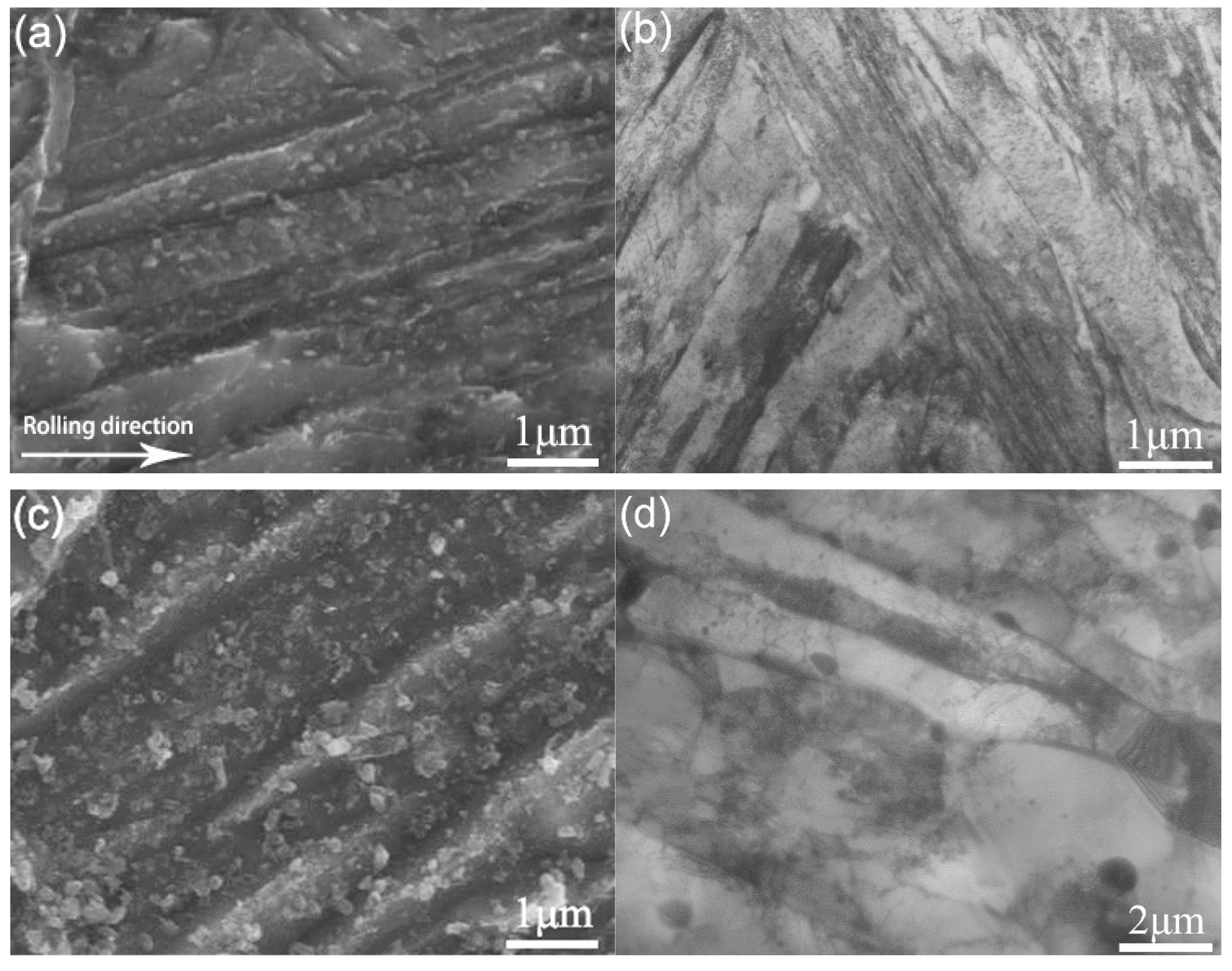
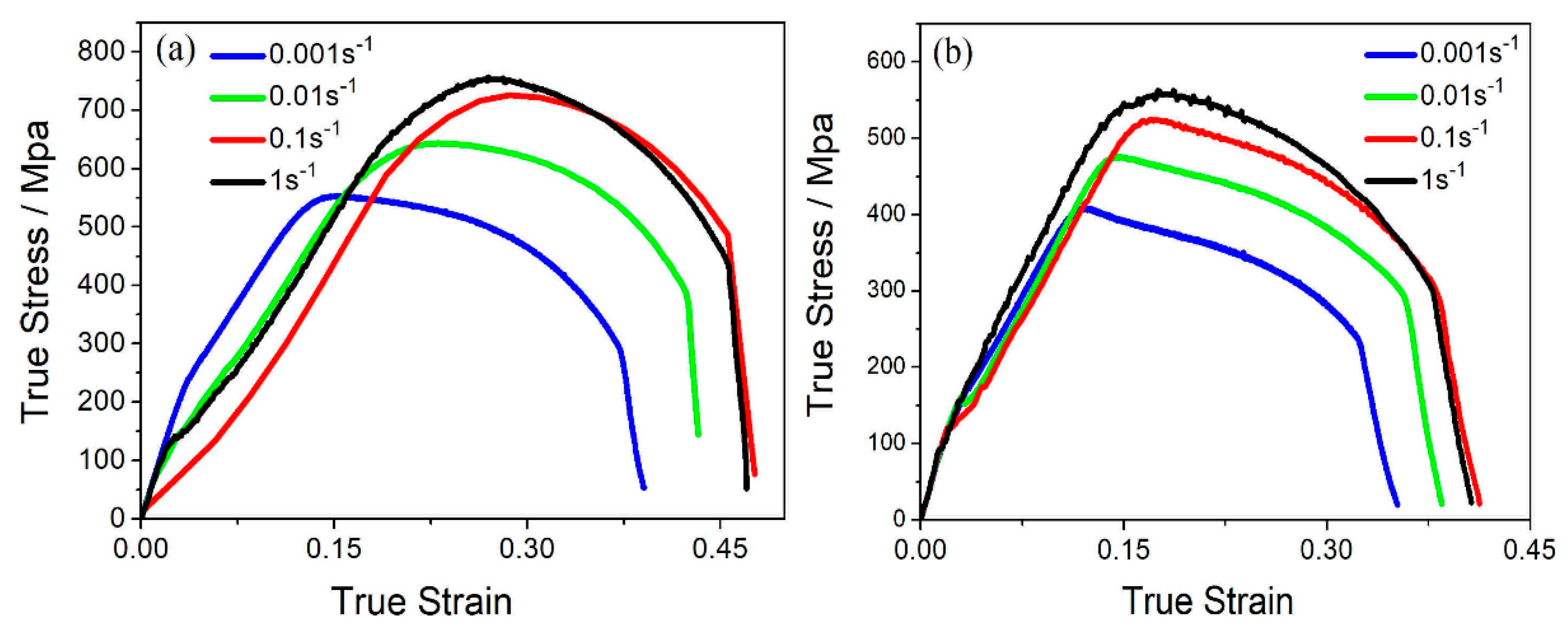
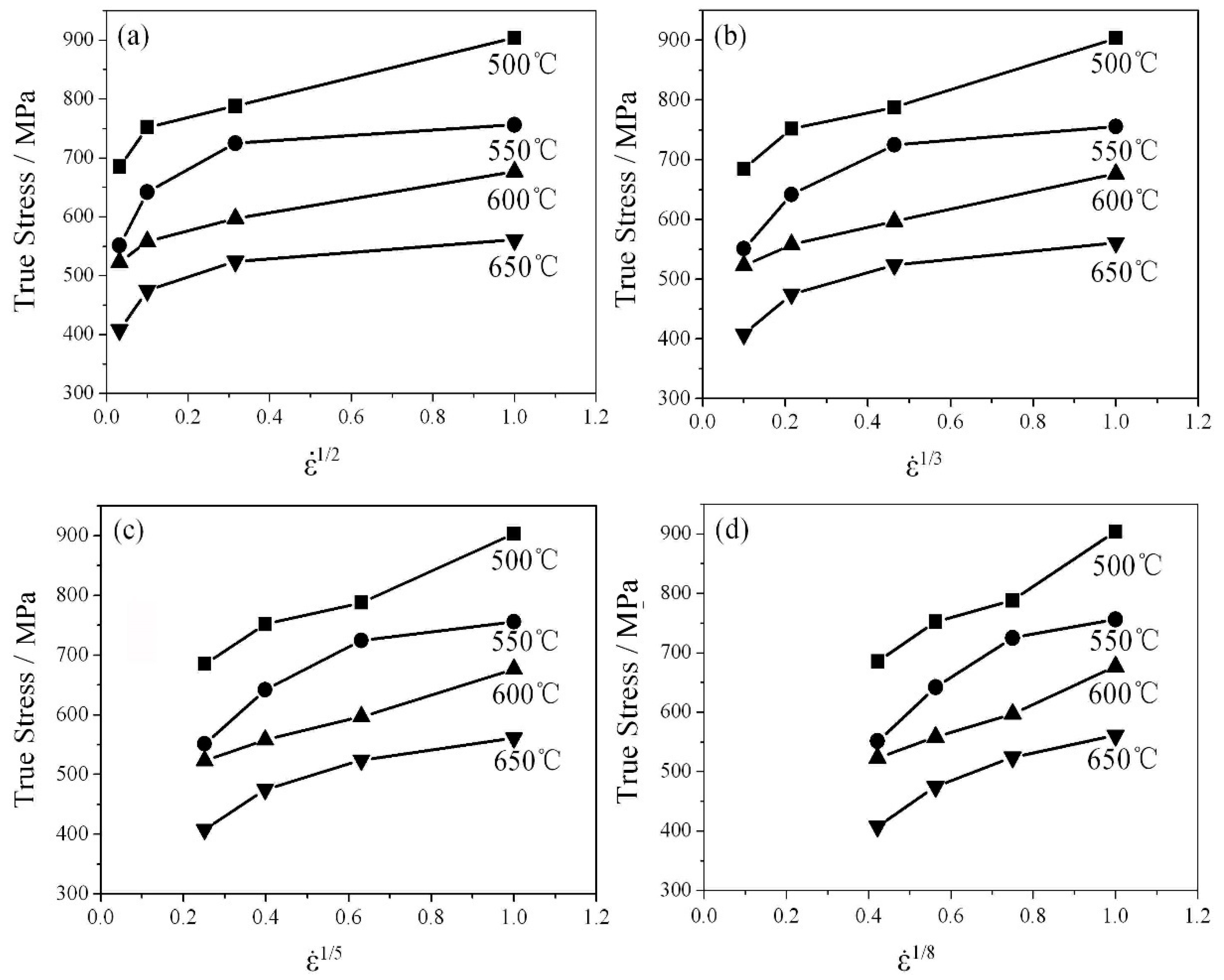
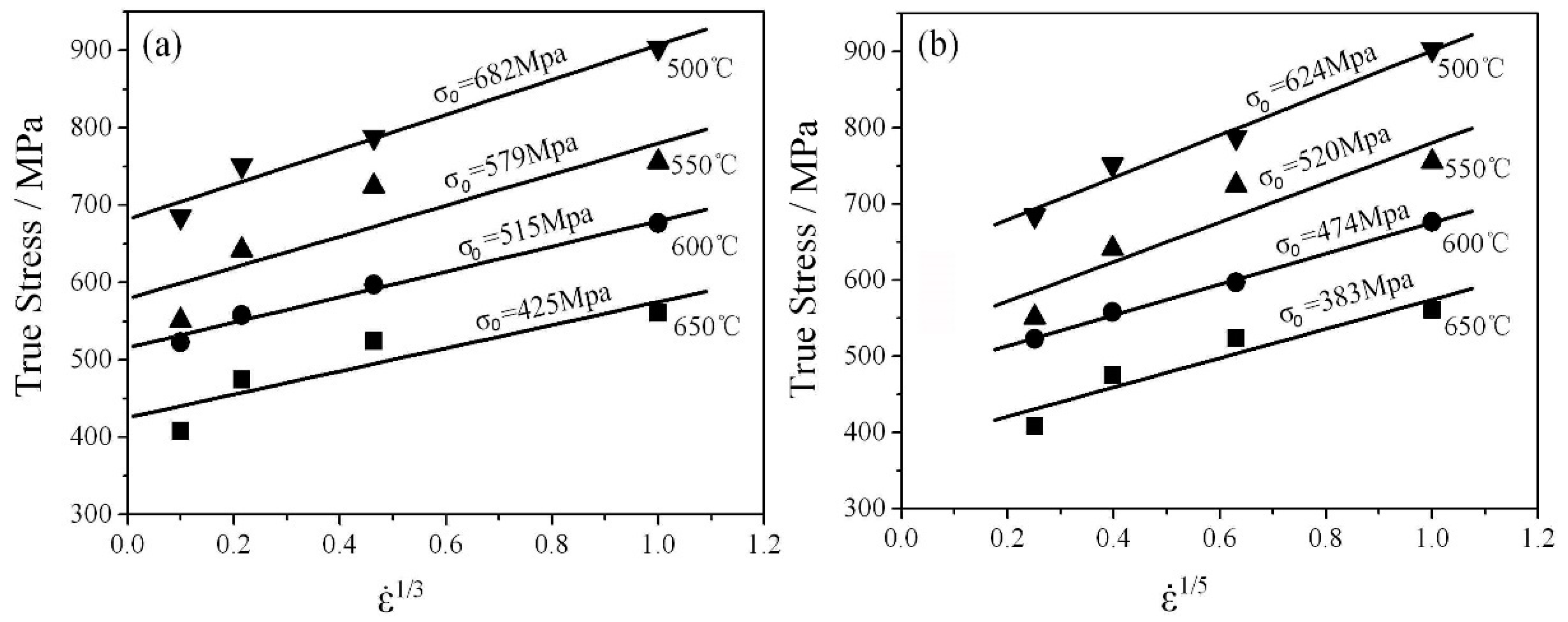

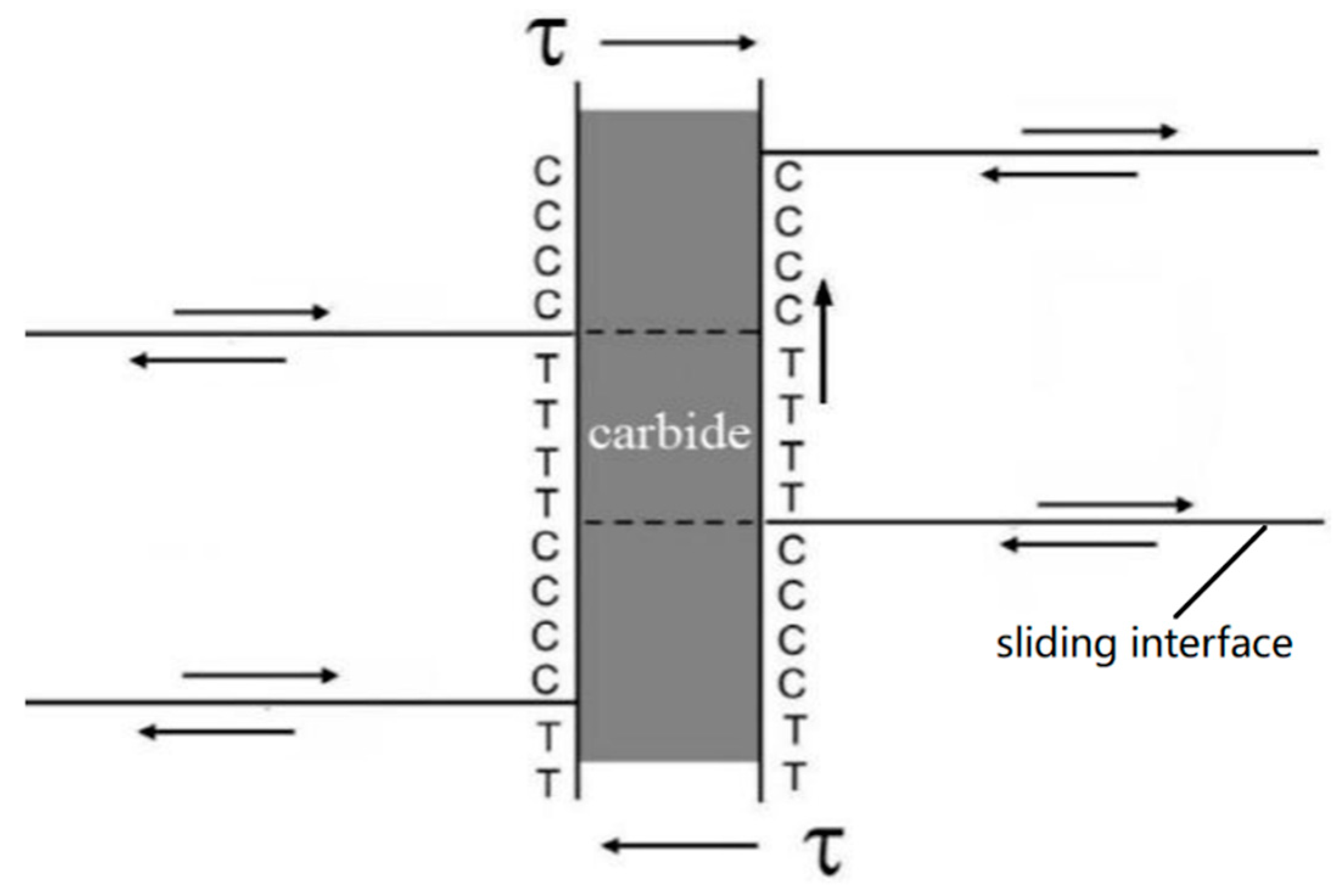
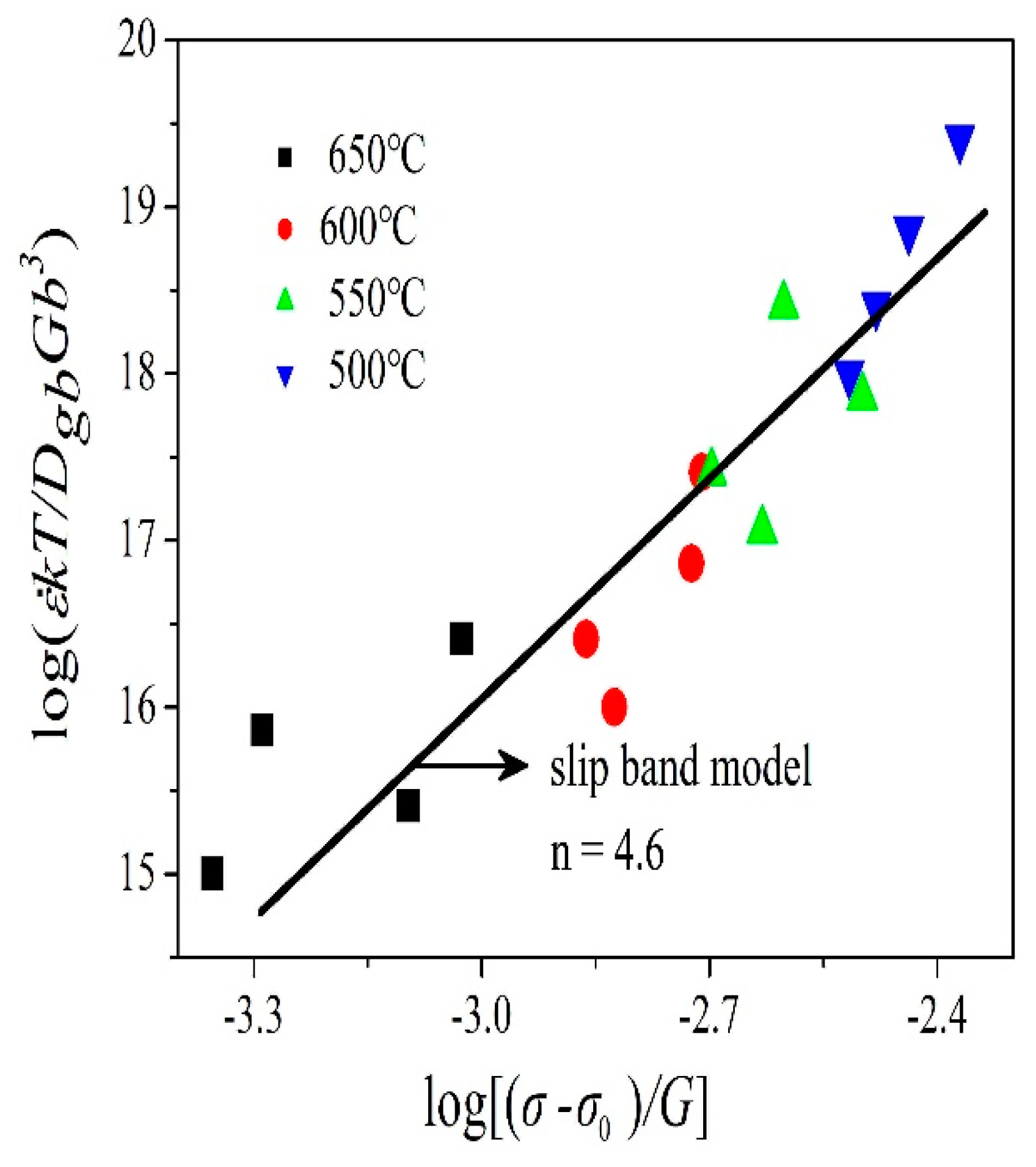
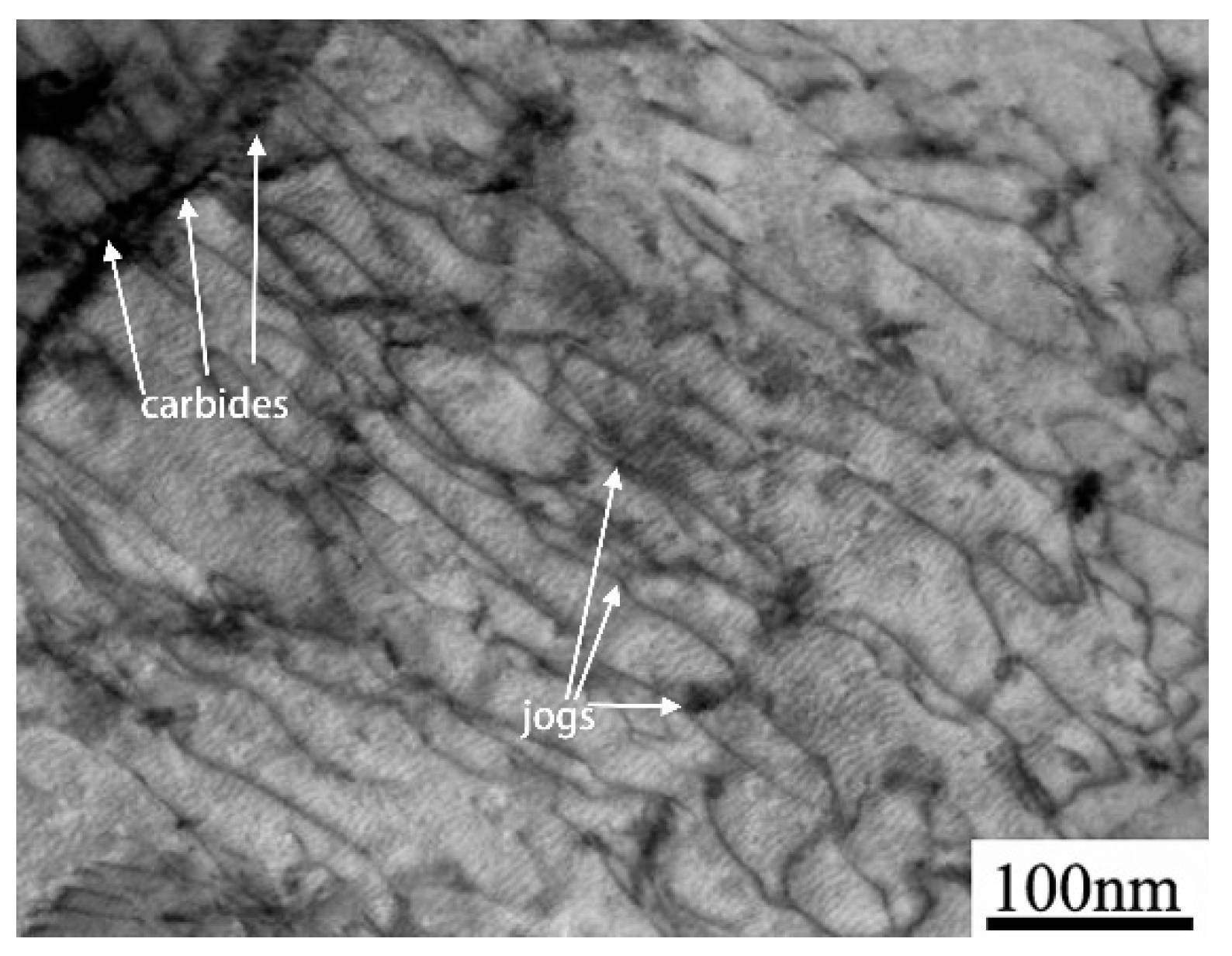

© 2019 by the authors. Licensee MDPI, Basel, Switzerland. This article is an open access article distributed under the terms and conditions of the Creative Commons Attribution (CC BY) license (http://creativecommons.org/licenses/by/4.0/).
Share and Cite
Zhang, Y.; Luo, P.; Niu, L.; Lu, Z.; Yan, H.; Hu, X. Kinetic Analysis of High-Temperature Plastic Flow in 2.25Cr-1Mo-0.25V Steel. Materials 2019, 12, 4071. https://doi.org/10.3390/ma12244071
Zhang Y, Luo P, Niu L, Lu Z, Yan H, Hu X. Kinetic Analysis of High-Temperature Plastic Flow in 2.25Cr-1Mo-0.25V Steel. Materials. 2019; 12(24):4071. https://doi.org/10.3390/ma12244071
Chicago/Turabian StyleZhang, Yongtao, Peng Luo, Longjiang Niu, Zhanpeng Lu, Haitao Yan, and Xiaoli Hu. 2019. "Kinetic Analysis of High-Temperature Plastic Flow in 2.25Cr-1Mo-0.25V Steel" Materials 12, no. 24: 4071. https://doi.org/10.3390/ma12244071
APA StyleZhang, Y., Luo, P., Niu, L., Lu, Z., Yan, H., & Hu, X. (2019). Kinetic Analysis of High-Temperature Plastic Flow in 2.25Cr-1Mo-0.25V Steel. Materials, 12(24), 4071. https://doi.org/10.3390/ma12244071



